LifeStation Medical Alert System Review
Unique features for seniors and caregivers at an affordable price

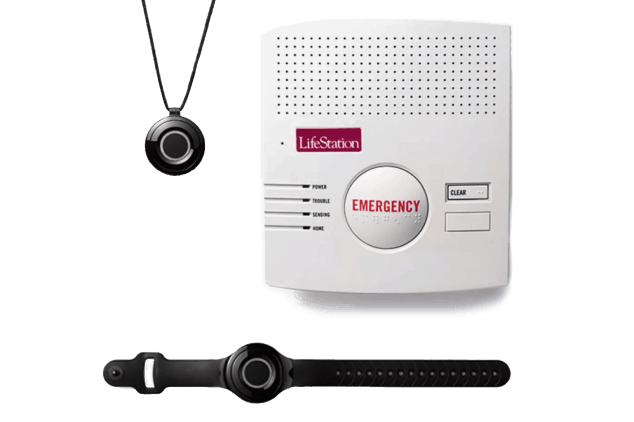
SafeHome.org may receive compensation from some providers listed on this page. Learn More
We may receive compensation from some providers listed on this page. Learn More
Unique features for seniors and caregivers at an affordable price


With an estimated 3.4 million Americans using a medical alert device,1 the market has encouraged the growth of new technology and a variety of choices.
LifeStation is one of the companies that has been around the longest — since 1977. Still a family-owned company operating from its headquarters in Union City, New Jersey, it focuses on assisting caregivers as well as older adults. One of its best products is the Mobile LTE, which has since been renamed the Sidekick.2
We spent time observing the subtleties of this device. We think that you will like the device’s simple setup and ease of use. We will also talk about several extras that LifeStation offers that are not found on all medical alert systems.
We will point out a few drawbacks to the system, too, in order to consider all the pros and the cons as you make a decision on how best to provide safety for yourself or your loved one.
Before we get started, we highly recommend reading our Medical Alert Systems Buying Guide. It will give you an idea of what to look for as you shop for medical alert systems.
And now, it’s time to jump into our complete review of LifeFone’s mobile medical alert system.
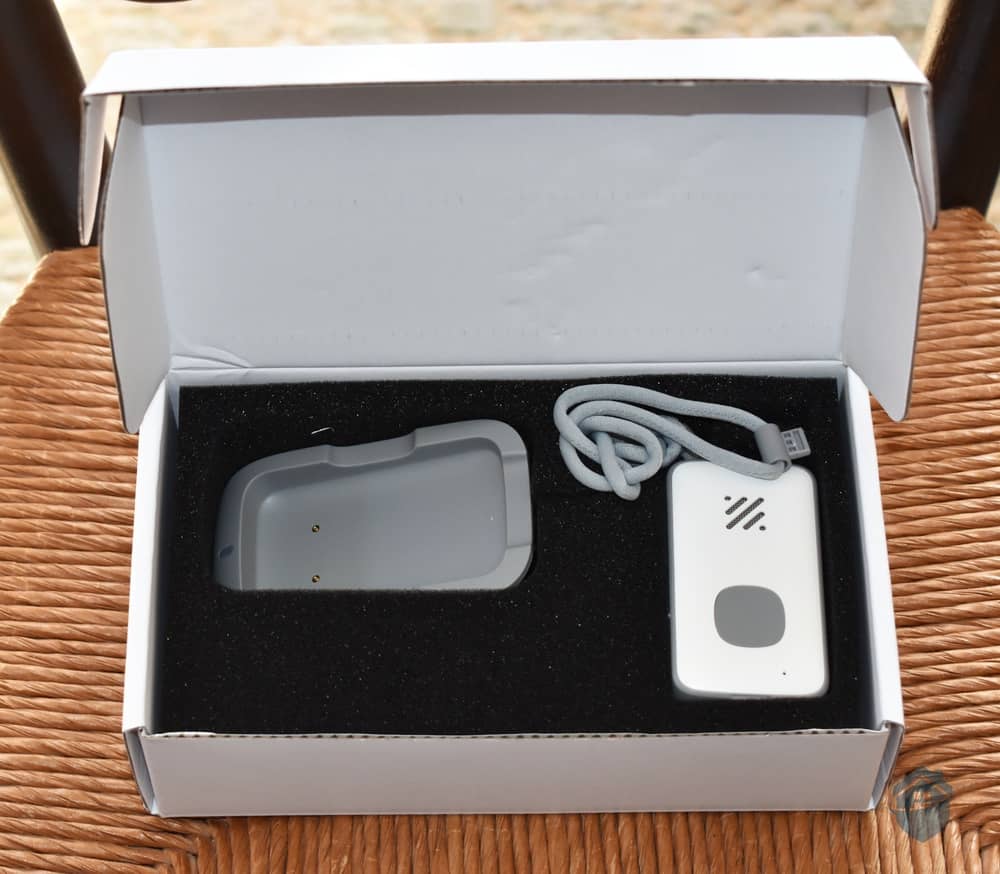
LifeStation Box
LifeStation Mission Statement: LifeStation empowers the lives of seniors, and their caregivers through medical alert and connected health solutions.3
Check out more recommendations from the SafeHome team:
Before we dive any deeper, we’d like to clarify that LifeStation’s move to rename the Mobile LTE to Sidekick was more than just a rebranding. They did actually replace the hardware. For this review, we looked at the older hardware for the Mobile LTE system, but if you buy now, you’ll likely get the newer Sidekick equipment. While LifeStation’s product page for the Mobile LTE is still up4, it’s no longer listed as one of the company’s products in the website homepage.
That said, the Sidekick system isn’t really that much different from the Mobile LTE. In fact, most of the features we mentioned in this review are still available. The biggest changes we noticed have to do with the hardware itself.
For starters, the Sidekick unit is much smaller, sleeker, lighter, and stylish. Yet, it was able to retain the long battery life of the Mobile LTE unit. Unfortunately, it lost one of our favorite features of Mobile LTE – dual-technology fall detection, which uses gyro and accelerometer input to detect falls. The Sidekick still offers fall detection, but only using an accelerometer, which might make it more prone to false detections.
Here’s a more detailed look at their differences:
| Features and details | Sidekick | Mobile LTE |
|---|---|---|
| Dimensions (in millimeters) | 65 x 43 x 16 | 77.8 x 44 x 22 |
| Weight (in ounces) | 1.65 | 2.5 |
| Battery life | 5 days | 5 days |
| Fall detection | Yes | Yes |
| Fall detection technology | Accelerometer | Gyroscope + accelerometer |
| Waterproof rating | IP 67 (can be worn in the shower) | IP 67 (can be worn in the shower) |
| Location technology | GPS and Wi-Fi tracking | GPS, Bluetooth, and Wi-Fi tracking |
| Test button | Dedicated test button | Programmable “shield” button |
| Voice prompts | Yes | Yes |
| Haptic feedback | Yes | Yes |
| Available attachments |
|
|
Overall, the Mobile LTE device is more robust, and it offers more technology. And if that’s what you like, you could probably still talk to LifeStation about getting one. However, for those who prefer the Sidekick’s more stylish and lightweight construction, just know that there are features mentioned in this review you could miss out. Don’t worry, we’ll be sure to point them out.
With that, let’s start with our LifeShield Mobile LTE review.
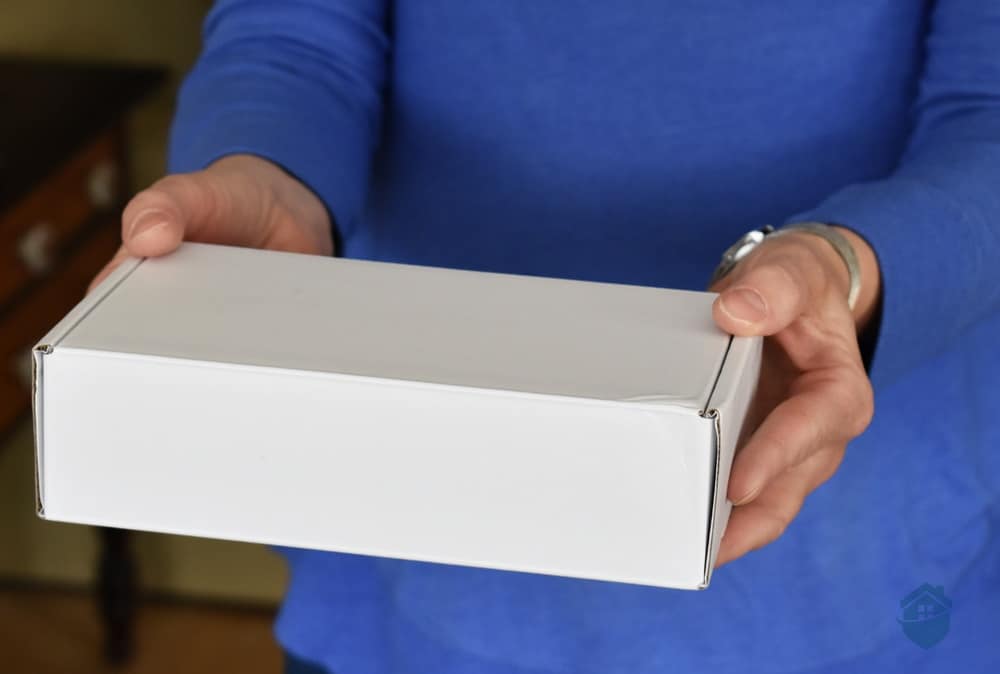
Unboxing LifeStation
When you hear the word “system,” you might think “lots of equipment.” However, there weren’t “lots” inside the small box that we were holding in our hands. In fact, opening the cover only revealed the Mobile LTE Medical Alert with GPS, its charger and a lanyard. It also came with a “Getting Started” pamphlet not much bigger than an index card.
With these few pieces of equipment and concise directions, setup was a breeze. We looked around our house for a good spot to set up the charger. We wanted a spot that was in a central location, so that we would see it frequently and remember to charge our device. The device has an extended battery life of five days so doesn’t need to be charged daily, but doing so isn’t a bad idea. Any routine from getting up in the morning to brushing your teeth at night works best when done at the same time each day — at least it does for us. We noticed after plugging in the charger in our living room that the indicator light on it immediately lit up red.
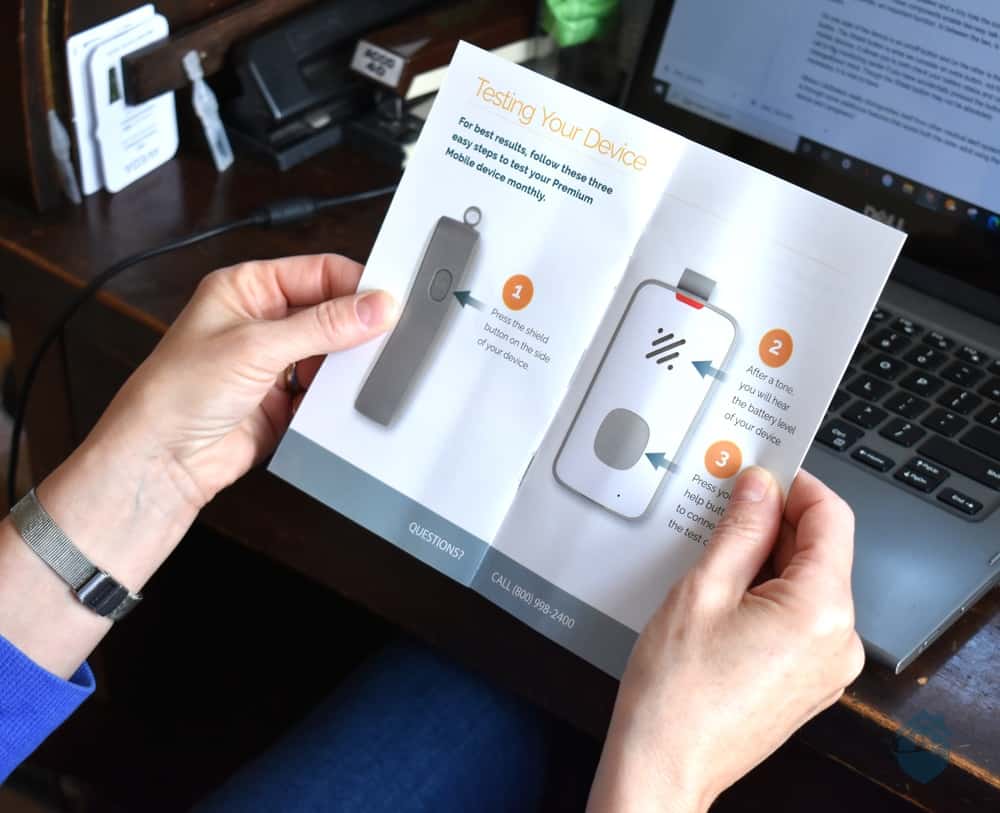
Setting Up LifeStation
Following the directions in our “Getting Started” pamphlet, we proceeded with setup by pressing the shield button on the side of the device. We immediately heard a sharp tone. It was loud enough that my Goldendoodle, deep in her morning nap beside me, was awoken. Her head popped up from the sunny spot on the rug, cocked and instantly alert. It shouldn’t be any trouble getting your attention with this device.
A voice prompt, equally loud, announced, “Battery level is good.” No need to wait to use our device while it charged, as we sometimes need to with other systems. This would not be the last of the voice prompts. They are a central component of the system and make using the device easy, even for the older adult with vision or hearing impairment.
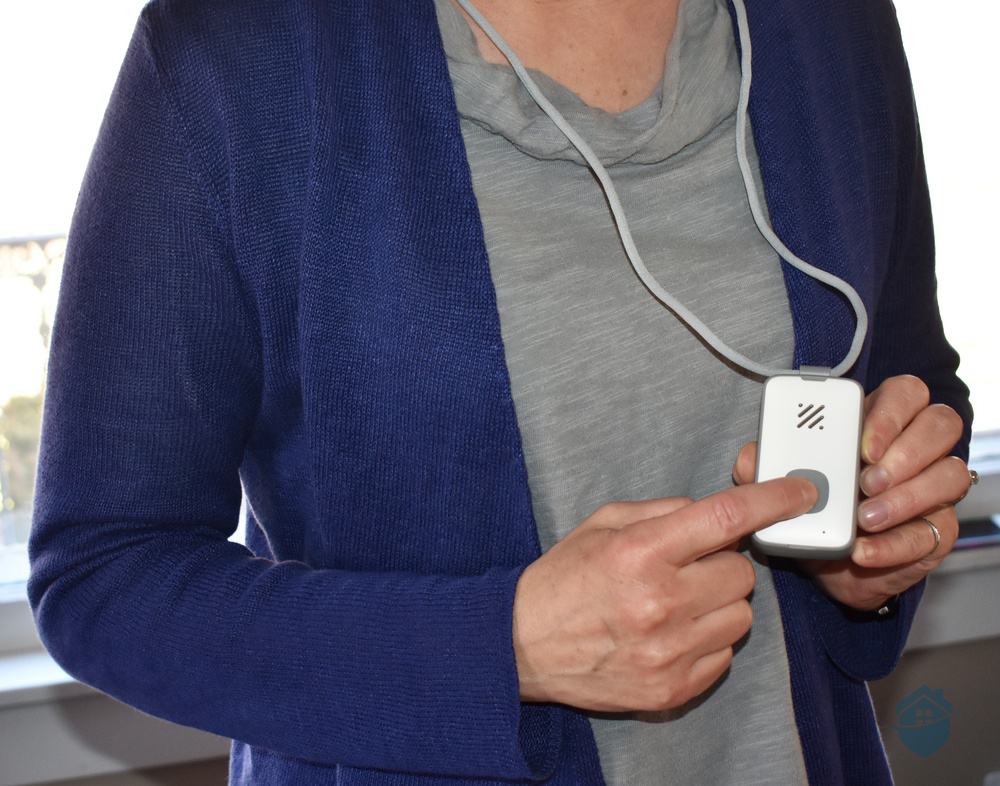
Testing LifeStation
For example, we next heard, “If you want to test the system, press the help button now.” We went ahead and pressed the large gray button at the bottom of the device. A monitoring center associate answered our test call, informed us that the system was working and reset the device.
And our setup was complete.
Before we get into a discussion about what we really liked about the Mobile LTE, let’s begin with a look at the product.
The Mobile LTE has a white face while the sides and back of it are gray. Its dimensions are 3 inches x 1.63 inches x 0.75 inches and weighs 2.5 ounces, about the size of a bar of soap.
Pro Tip: To keep your device stable and prevent it from swinging, shorten the lanyard so that it rests close to your sternum.
In truth, we hate to use the word “generic,” but it is similar in size and appearance to many of the other mobile devices out there. We have seen a few that are a bit larger, but we have also seen quite a few that are smaller and lighter. And while a few have designed their devices to look more “techy” than medical, the Mobile LTE definitely has the look of a medical device.
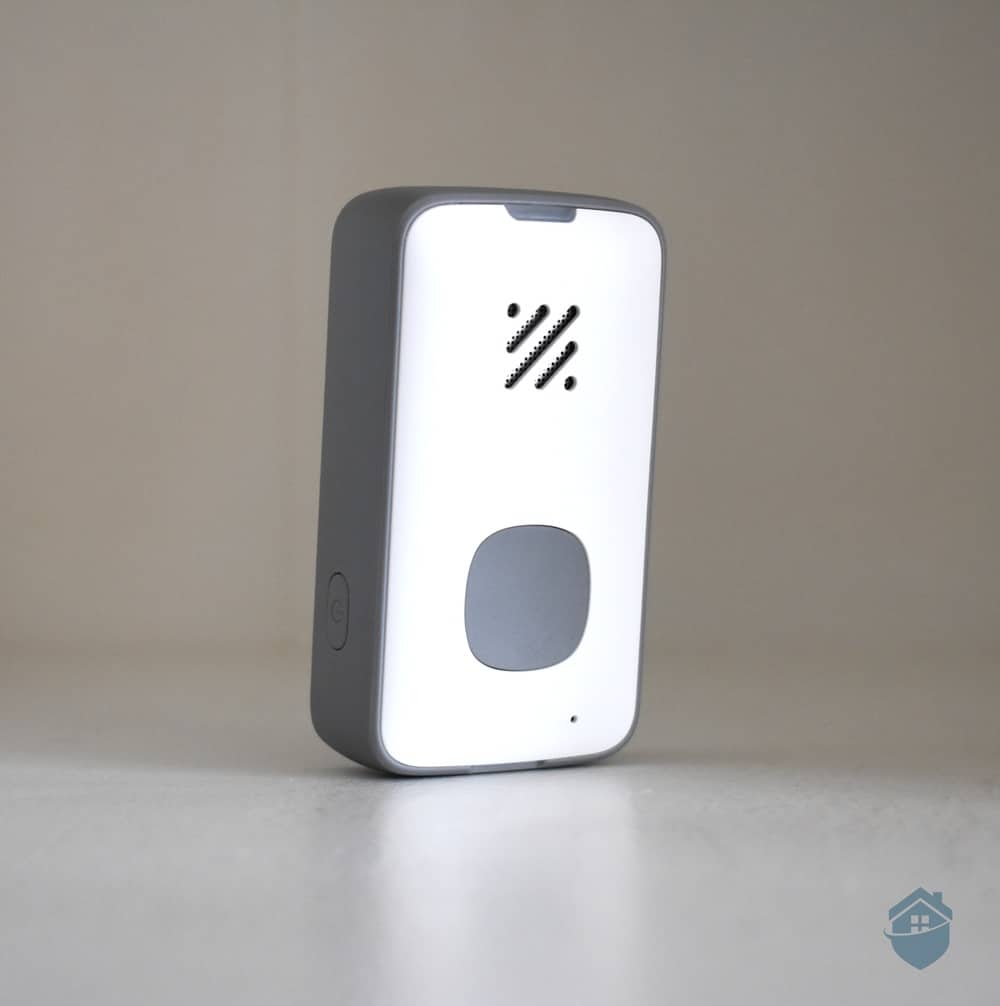
LifeStation Mobile LTE
On the front of the device is a speaker and a tiny hole the size of a pinprick which is the microphone. These components enable two-way talk with the monitoring center, an important function. The help button is in between the two.
At the very top of the device is an indicator light. Most of the time, the light will slowly flash green (about every 30 seconds) signaling that it is fully charged. When the device is charging, it will light up a solid blue, and when the battery is low, it will flash blue.
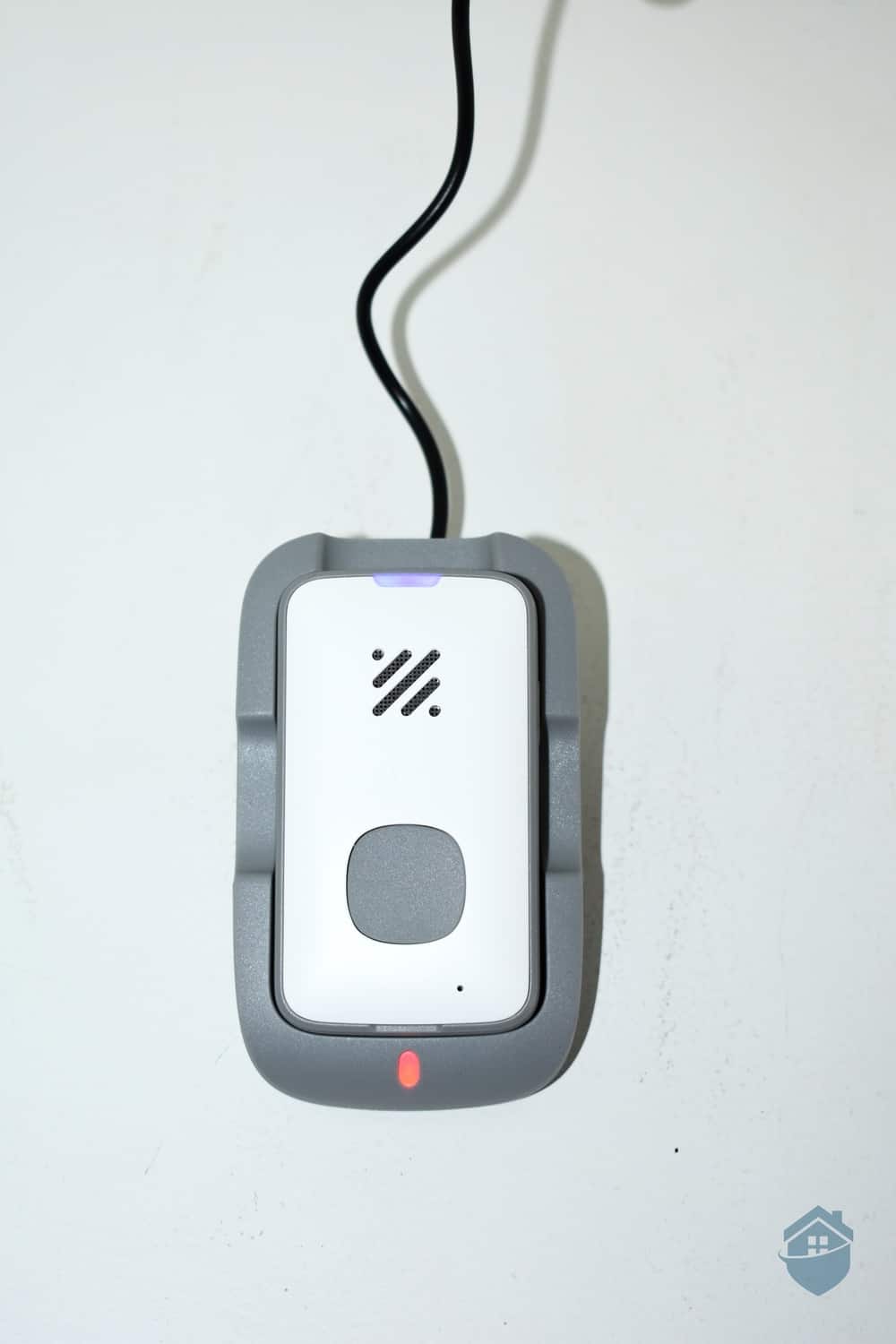
Closeup of the LifeStation Mobile LTE
On one side of the device is an on/off button and on the other is the shield button. The shield button is what we consider an extra button, not found on all mobile devices. It allows you to both check your battery status and cancel a call to the monitoring center if you have accidentally pressed the button or changed your mind. Though the shield button may not be absolutely necessary, it is nice to have.
In contrast, the Sidekick device is smaller. It measures 2.5 inches x 1.7 inches x 0.63 inches. It’s also almost a full ounce lighter than the Mobile LTE.
The buttons are also a little bit different. Instead of a shield button that can perform several functions, the Sidekick unit has a dedicated test button so you won’t have to use the help button to test the device. There is also a silence button that can turn the voice prompts on or off.
We like that the Sidekick has these dedicated buttons instead of the multi-function shield button of the Mobile LTE. They make the Sidekick easier to use, as the user won’t have to memorize a sequence of button presses to activate a certain function, like testing the device.
That said, while the Sidekick’s design is an improvement over the Mobile LTE, it is still generic. We say that because we found it eerily similar to the At-Home & On-The-Go, VIP Active mobile device shown in our LifeFone review. This isn’t surprising and is actually a well-known trade secret. Some medical alert companies don’t manufacture their own equipment. Instead, they use equipment provided by manufacturing suppliers, but make it their own by offering unique features. This brings us to our next point: LifeStation’s unique features.
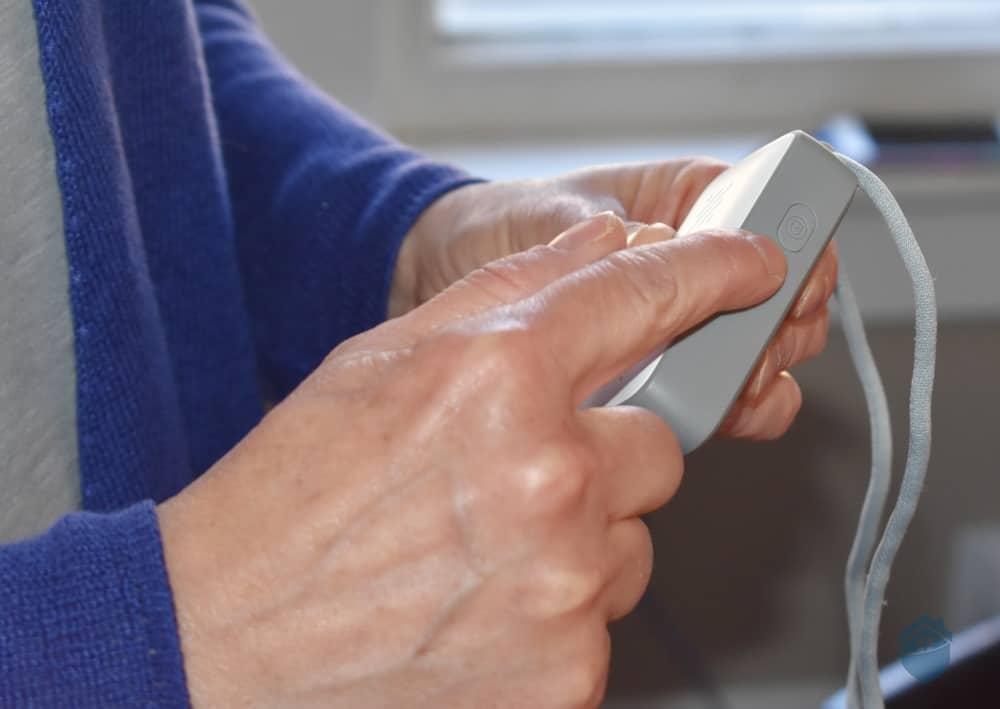
Using LifeStation Mobile LTE
Where LifeStation really distinguishes itself from other medical alert systems is through some additional features that assist both the older adult using the device and caregivers.
One of these features is location detection for the monitoring center (an industry standard) and also for caregivers (not found in most mobile devices). LifeStation calls the location detection for caregivers “Find My Loved One.” It works like this: Caregivers are provided a phone number that they can text. A reply to the text will identify the location of the device.
To help understand how this might work in practice, consider a situation in which Julie is a caregiver for her mother, Mary, who is in the beginning stages of dementia. Mary is in the garden pulling weeds, but when Julie walks out to check on her, she realizes that her mother is no longer in the yard. Julie sends the prescribed text: “Find Mary.” The response shows that Mary has walked down the block to a neighbor’s house. Julie’s moment of panic subsides, and she walks down to the neighbor’s to check on her mom.
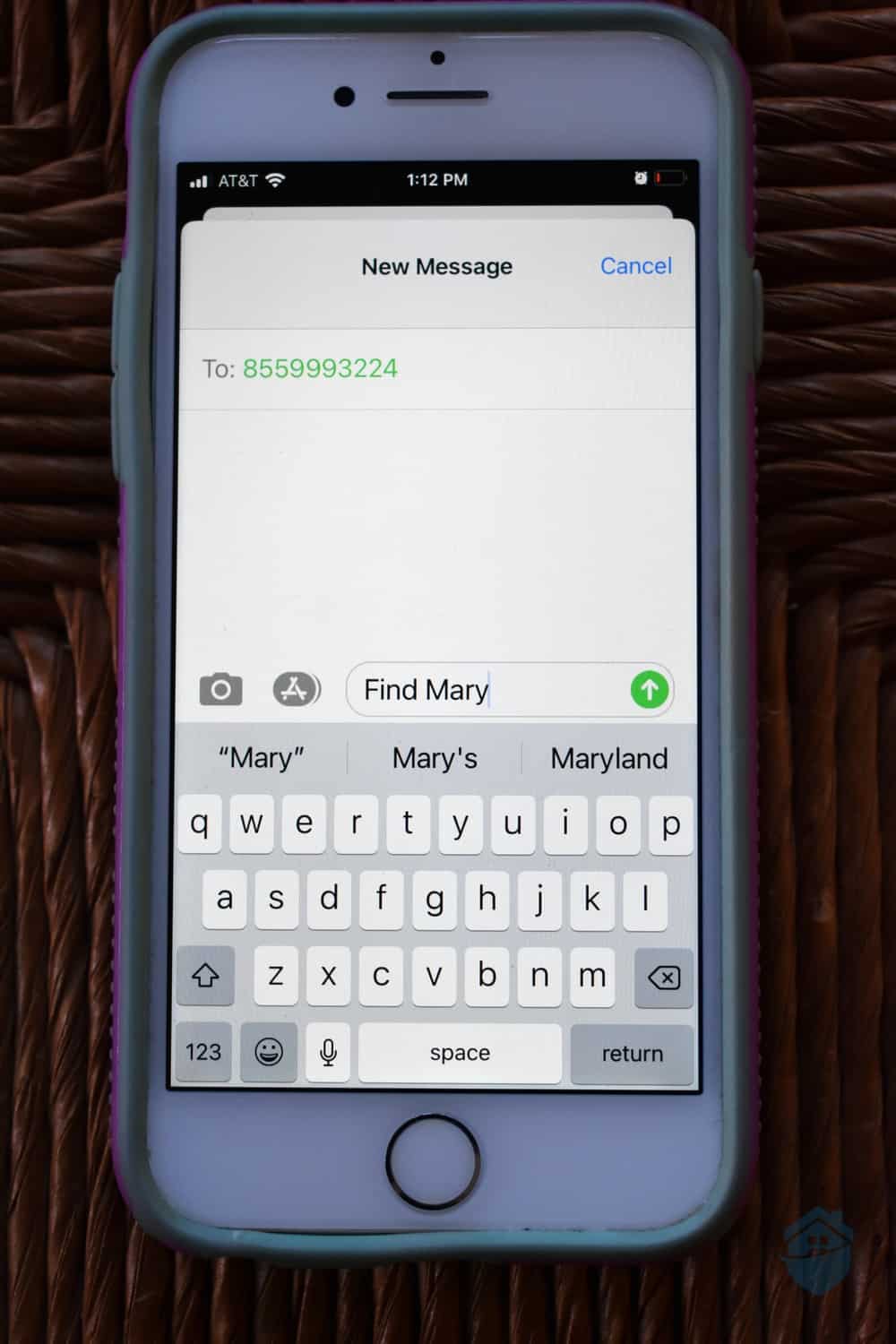
LifeStation Support
Of course, there are many other types of situations that could warrant the need for location detection. LifeStation considers this particular function so important that it goes beyond just utilizing GPS. It uses a combination of GPS, Wi-Fi and Bluetooth to ensure that whoever needs help, whether inside or outside, doesn’t fall through the cracks.
The Mobile LTE can also be paired with Alexa to perform caregiver functions such as checking a loved one’s history of emergency calls or for location detection. For example, you could say, “Alexa, where’s my mom?” and quickly learn her whereabouts.
We like that the needs of caregivers as well as the needs of older adults have been taken under consideration by LifeStation. If interested in learning about another medical alert system that offers great caregiver services including motion sensors and smart apps integration, read our review of Aloe Care Health.
We’d like to point out that while some of LifeStation’s features make it stand out, like the GPS locator highlighted above, they are not exactly state-of-the-art. Case in point: We’ve seen much more advanced features in our top-pick mobile medical alert system, the SOS Mobile.
With LifeStation, caregivers will have to send a SMS message to a designated number to receive a link that leads to an online map that shows the location of the Mobile LTE or Sidekick device.
With Bay Alarm, there’s an app for that, and in addition to the current location, it can show the user’s location history. The Bay Alarm app features an emergency safety plan, which caregivers or the user themselves can fill out with important details like emergency contacts, health conditions, and medications that can come in handy during a medical emergency. And since this app is designed for caregivers, you can add multiple users and/or co-caregivers for a much more streamlined system.
This is an area where LifeStation is seriously lacking. A lot of the medical alert systems we test, not just Bay Alarm, offer an app or web dashboard for caregivers. So even though LifeStation’s equipment is excellent, we think there are better and more advanced systems out there.
LifeStation operates two monitoring centers in New Jersey and Texas. It is great to know that the system includes redundancy in case of an event, such as when a severe storm leads to a loss of power. The safety of older adults would never be compromised. The centers also have earned a TMA Five Diamond certification, the gold standard of certifications in the medical alert system industry. This knowledge gave us confidence in the system.
As we do with all medical alert systems, we contacted the monitoring center by pressing the help button several times over the course of a few days. Two of the attempts failed. In one case, the monitoring center associate was unable to connect on his end, so called me via phone. He directed me to call customer service to troubleshoot, and the situation was quickly resolved. It didn’t concern me since malfunctions do happen with all systems from time to time.
During the second incident, we heard a busy signal about 40 seconds after pressing the help button. A monitoring center associate followed up with a call approximately five minutes later and recommended retrying the test. When we did, the test ran smoothly. Still, receiving a busy tone during an emergency would be frightening for a senior.
The remaining four attempts were successful, and the response time ranged from 37 to 57 seconds. The average response time came out to 46 seconds, a bit over the 30-second industry standard, but nothing to fret about.
We created this short video to really give you an idea of what to expect with LifeStation and their response times:
One of the newest innovations in medical alert technology is fall detection. Though prone to a small level of false alerts, the technology is useful for older adults — especially those at high risk for falls.
Did You Know? You might be surprised to learn that one of the chronic conditions with the highest incidences of falls is chronic obstructive pulmonary disease (COPD). Second only to osteoarthritis, the incidence of falls in people with this condition is estimated to be between 25 and 46 percent.5
LifeStation uses a combination of two technologies to detect falls. Combined together, the accelerometer and gyroscope in the device detect the sudden acceleration that occurs during a fall and the quick change in orientation (i.e. from the vertical standing up position to the horizontal lying down).
The idea is that an older adult may not be able to communicate with the monitoring center following a fall. For example, a head injury from the fall could cause unconsciousness or confusion. A medical event that causes the fall, such as a stroke, could also render a person unable to communicate. If a fall alert was sent to the monitoring center, and the device user was unresponsive, help would be sent.
Note that this is one of the areas where the new Sidekick mobile unit can be considered a downgrade to the Mobile LTE we tested. The Sidekick device uses just an accelerometer to detect falls. This is a proven and tested technology, used since the early days of systems with fall detection, but without the gyroscope, the Sidekick device might be more prone to false alarms.
Pro Tip: If a senior falls while wearing the Mobile LTE with fall detection, and is able to press the help button, they should always do so. Fall detection provides a safety net, but the help button should always be your first line of defense when possible.
Another system with great fall detection capabilities, in both its at-home and mobile systems, is Lifeline. Read our overview of Lifeline’s products to learn more.
When we consider making a considerable purchase, we like to do our research before speaking to anyone by phone. We typically go online, find a few options and then flip back and forth between websites to compare. One thing we always compare is price. But it’s quite unusual that prices were not available on LifeStation’s website. This might discourage potential customers.
It also made us wonder if the prices were higher than average. Fortunately, this turned out not to be the case. The prices are actually on the low end of the industry standard range. In addition, LifeStation does not charge equipment or activation fees, making their products even more affordable. The only one-time cost is a $10 shipping fee.
We weren’t sure why they wouldn’t want to advertise this affordability. Further, it wasn’t until our third phone call with customer service that we came to understand that LifeStation offers three packages for its mobile system. To keep it simple for you, see the features and prices below.
| Basic System | Select System | Supreme System | |
|---|---|---|---|
| Mobile Device | Included | Included | Included |
| Help Button | Included | Included | Included |
| Protection Plan | Not Available | Included | Included |
| Fall Detection | Not Available | Not Available | Included |
| Price | $39.95 | $46.95 | $53.95 |
LifeStation also offers one at-home system and one on-the-go system in the form of a medical alert watch. We have included a brief look at their features and prices below.
| Details | Sidekick Home | Sidekick Smart |
|---|---|---|
| Starting Monthly Price | $34.95 | $46.95 |
| Usage | At-home | At-home and on-the-go |
| Connectivity | Cellular | Cellular |
| Devices included |
|
|
| Fall Detection Available as an Add-On | Yes | Yes |
Finally, you have an option to pay quarterly or annually. If you choose to use one of these payment options, your $10 shipping fee will be waived.
Every medical alert system offers one or two or as many as a dozen add-ons in order to customize the system. If you are someone who likes to have lots of options to choose from, you may want to consider Medical Guardian, which offers everything from car chargers to jewelry pendants that encase the help button. To learn more, check out our in-depth Medical Guardian review.
LifeStation keeps it pretty simple, offering three basic additions indicated in the package/pricing chart above. Like the pricing, this information is as easy to find as the phone chargers that are constantly disappearing in our house. But Phil in customer service helped us figure it all out, and we are sharing the information below.
Pro Tip: If you do not want to pay a monthly fee for a lockbox, another option is having a keyless door lock installed. The monitoring center can securely store the code if ever needed by emergency services.
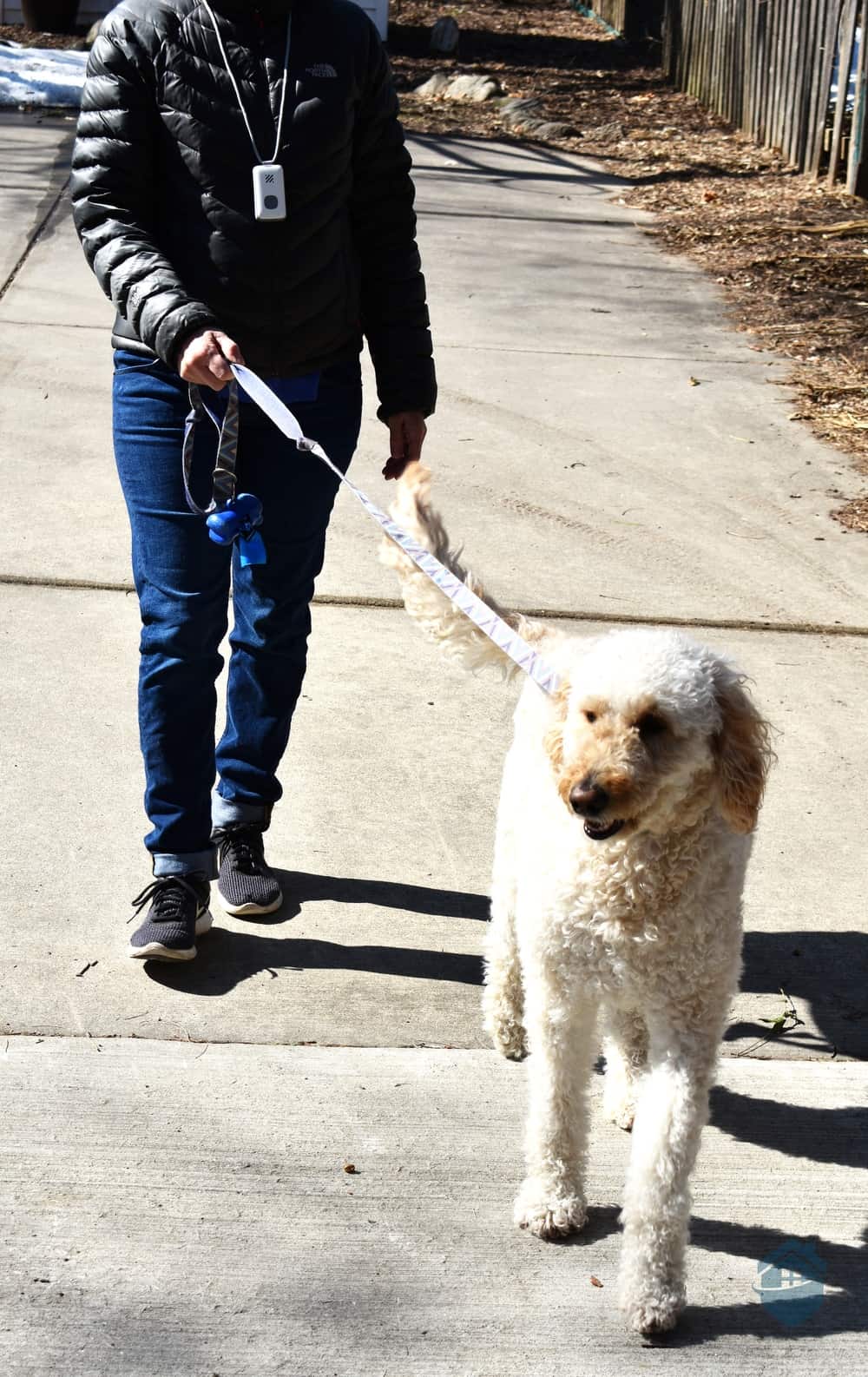
Wearing LifeStation while walking the dog
From the beginning, one thing that was striking to us was the absence of a help button. A help button is offered with most mobile medical alert systems to wear while at home. Although it has fewer functions than most mobile devices, it is smaller, lighter, and more comfortable. It operates through the mobile device which becomes like a base unit in the home.
Turns out, we weren’t the only ones who noticed its absence. A customer service representative told us that because many customers requested a help button, LifeStation had recently begun offering them with the mobile device. However, the help button could only be purchased through Amazon at a more expensive price.
During a subsequent conversation, customer service informed us that (surprise!) LifeStation was now offering the help button when the mobile device was ordered. (It was during this conversation that we learned of the three pricing packages.) While we were a little unsettled by the inconsistency in the information that we received, we were pleased that a help button would now be available to customers.
A second item that we think is worthwhile for some older adults is a belt case or clip. Some older adults who are sensitive to the stigma of a medical device don’t want the device to be visible in the first place. Because the LifeStation mobile device is “medical looking,” some may be turned off by wearing the device around a lanyard. Wearing the device on the belt, where it is less visible, is a great option for some.
In addition, a recent survey showed that while 74 percent of women choose to wear their medical alert device as a pendant, only 47 percent of men do.6 Perhaps a belt case or clip is a more appealing option for men.
According to the information we received from customer service concerning the pricing packages, we should have received a belt case with the mobile device, but did not. It is possible that we placed our order just as the company was incorporating some changes. However, we strongly recommend asking about the belt case when placing an order.
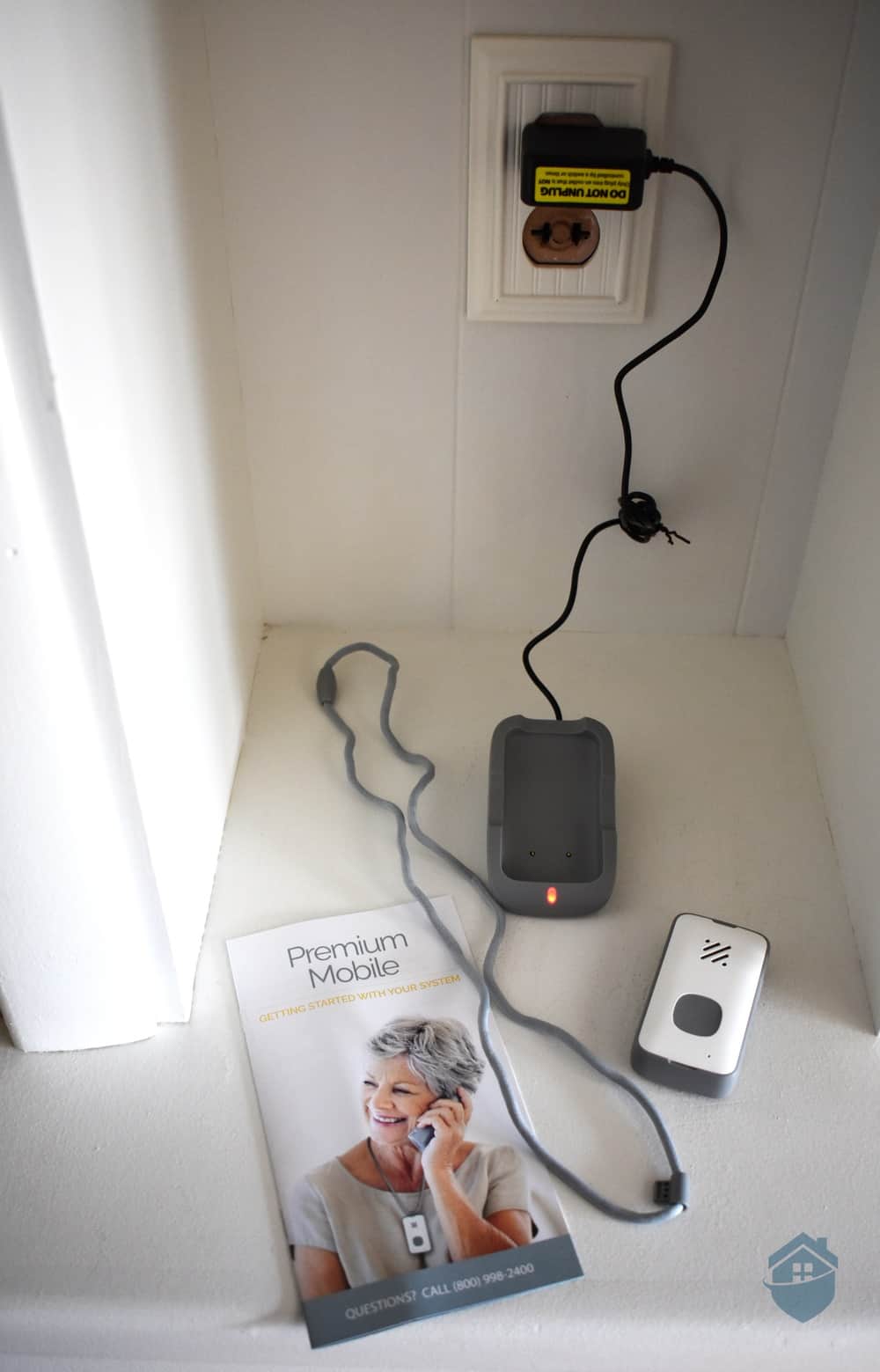
Charging LifeStation
Another option for wearable mobile devices is the smartwatch, which was not yet available at the time we tested LifeStation. They have one now, called the Sidekick Smart, but we are yet to test the device. If you want to see a stylish-looking and functional medical alert watch that we have tested, read our review of Bay Alarm Medical’s SOS Smartwatch.
We can think of specific groups of people who would benefit from a medical alert system like LifeStation. The first group includes individuals who are hearing or sight impaired. LifeStation’s system includes voice prompts for everything from charging the battery to canceling a help call to connecting with a monitoring center. The prompts are loud and clear, which is a feature that provides value to this system.
We also think LifeStation has gone above and beyond for caregivers. Their mission statement makes a claim about their commitment to empower seniors and caregivers alike, and they “walk their talk.” In our experience, location detection, through text or Alexa, for caregivers is something few will regret spending money on. It simply provides peace of mind.
However, in a few other regards, LifeStation fell flat. Obtaining current and correct information from customer service was especially frustrating. While the individuals that we spoke to were always polite and did their best to help, accurate information is just not readily available.
And then there’s LifeStation’s lack of an app. Integrating technology into caregiving can do wonders both for the individuals getting the care and the people around them giving it. LifeStation could be better if they upgraded both their hardware and their software.
In the end, LifeStation’s features can provide great assistance in ways not offered by all systems. It’s not perfect – far from it, in fact. However, through the years, LifeStation has shown that it can evolve and improve. We’re just hoping they do that sooner rather than later.
In the meantime, check out this list of the best medical alert systems. These are the systems we tested that are already doing great in many different aspects, so you might find the perfect match for you there.
LifeStation offers a 30-day, money-back guarantee if you try the product and decide it is not the right fit. If cancelling, customer service can provide directions for returning the equipment. Note that the $10 shipping fee is not reimbursed.
No, just one system uses a landline. The others have cellular chips that do not require a landline.
Yes, a spouse can receive a second help button for $3.99 per month. Only one monitoring fee per household is charged.
No, LifeStation is relatively affordable. Their prices per month are lower than, or similar to, leading competitors. One senior can start for as little as $21.95 per month total. (Although one-time fees for shipping and activation will be added for this basic package.)
That depends on your lifestyle and budget. But in our testing, the Mobile LTE button was the most useful. It’s waterproof and works anywhere with cellular signaling.
Businesswire.com. (2016, May 3). People Monitoring and Safety Solutions Market 2016 – 3.4 million Users of Mobile Telecare Systems Predicted in Europe and North America by 2021 – Research and Markets.
https://www.businesswire.com/news/home/20160503005832/en/People-Monitoring-Safety-Solutions-Market-2016–
LifeStation. Sidekick Mobile Medical Alert.
https://www.lifestation.com/pdp-sidekick/
LifeStation.com. Our Mission.
https://www.lifestation.com/our-medical-alert-company/
LifeStation.com. Mobile LTE Medical Alert System With GPS.
https://www.lifestation.com/partner-mobile/
Respiratory Medicine. (2012, May 13). Retrieved from National Center for Biotechnology Information. Falls in people with chronic obstructive pulmonary disease: an observational cohort study.
https://www.ncbi.nlm.nih.gov/pmc/articles/PMC3350813/
TheSeniorList.com. (2020, June 30). Medical Alert Device Consumer Usage Report 2020.
https://www.theseniorlist.com/research/medical-alert-device-consumer-usage-study/